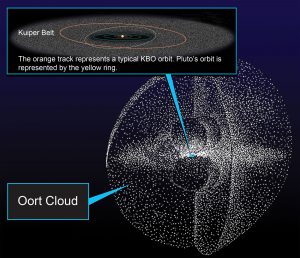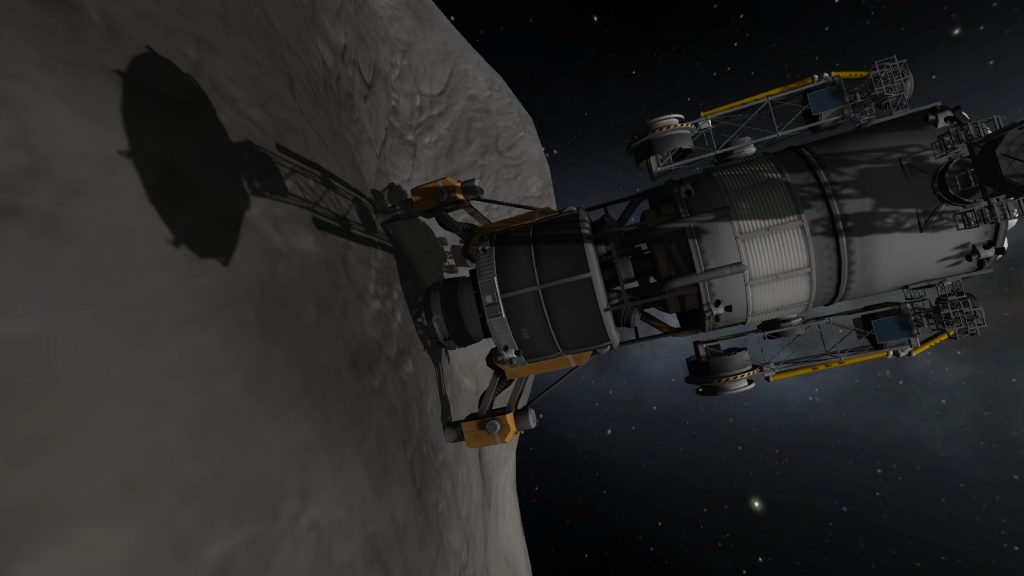comets and asteroids
The Rosetta Mission: Comet 67P/Churyumov-Gerasimenko (Spring 2018)
The night sky has fascinated humans on Earth for centuries. What, and possibly who, is living in the black abyss has continued to puzzle generations of scientists. There are endless hypotheses of how the solar system was created and how it functions. However, the only way to test those theories is to explore the diverse and unknown territory beyond Earth. As technology advanced, humans began to explore outer space which strengthened our knowledge of the solar system. Since the evolution of man we learnt to understand our history. From early ages of discovering the universe around us we adapted to new techniques. One particular mission caught the attention of many by attempting to solve the mysteries of comets and how life on Earth began. This mission was named the Rosetta Mission. The Rosetta Mission has taught us what we know about comets and in particular Comet 67P/Churyumov-Gerasimenko.
Comets: A Dance of Ice and Dust (Winter 2018)
Of all the lights and objects that illuminate our night sky, there are none as captivating as the long, bright tail of a passing comet. Stretching across our sky in a bright, blue band, these astronomical phenomena are quite astonishing to observe, although comets bright enough to be seen with the naked eye occur rather infrequently. These radiant spectacles have been observed many times throughout history, though not all who saw them understood them. These comets were often seen as symbols of death and disaster; their bright colours foreboding calamities to come, but as time progressed, more and more was discovered about these foreign objects through unwavering theories, meticulous research, and the advancement of technology. The study of comets allows researchers to understand the how the universe works beyond our home planet and may provide clues to the origin of life on Earth. This progression of knowledge has evolved our perception and understanding of the Universe, and has led to a greater pursuit of the truth.
Comets and Asteroids (Fall 2017)
We will be discussing a variety of different topics related to comets and asteroids, such as the differences between the two and their connection to the Nebular Theory and the Nice Model, the discoveries of asteroids and comets, and how we classify them. Many individuals think that comets are just frozen chunks of ice and asteroids are large rocks both floating through space aimlessly. By looking into scientific resources we can research how asteroids and comets came into existence via the Nebular Theory, which hypothesizes that after the planets were created the solar winds blew away all extra particles and gas leaving behind larger planetesimals (comets and asteroids). The Nice Model hypothesizes that the solar system evolved and the orbital instability flung the smaller bodies out of Neptunes original orbit, scattering them. As we continue we will be looking more in depth at the Nebular Theory and Nice Model explanations of the creation of our solar system and how this relates to the formation of comets and asteroids. This study aims to answer the question: how did the development of the Nebular Theory and the Nice Model change our understanding of comets and asteroids?
Time Capsules of our Solar System (Spring 2017)
From an early age, many have learned about our Solar System – that of which is comprised of our Sun and eight planets with varying resources, environmental conditions, and a spectrum of colours and sizes. There also exists minor planets, moons, dust, gas, and comets and asteroids – but we are not always as knowledgeable about these objects in our Solar System. The fascination with space begins when one looks up at a dark, cloudless, and unpolluted sky to see the delicate speckling of millions of light sources: either dead long-ago or still producing a glowing luminescence. Comets and asteroids are no different to stars in their allure and intrigue to physicists, astronomers, and passionate observers. These large and looming objects present both fear and wonder to those that view them, for many know very little or nothing at all about their projections throughout the Solar System. This article provides an understanding of comets and asteroids through looking at the origins of these objects, the analyzation of empirical research conducted, and a variety of informative pictures, videos, and charts. Upon building a base comprehension of comets and asteroids, the article will dive into their historical and physical impact upon the Earth and the overall Solar System, their intricate role in the Solar System, and their capabilities toward a sustainable future.
Asteroid Mining (Winter 2017)
The mining of asteroids is not a new concept. Since the modern age of spaceflight, there have been many theories, thoughts, and experiments on how to accomplish resource collection from these astronomical bodies. In today’s world, as technology advances, it seems that the prospect of this happening grows closer and closer to reality. Asteroid mining and resource collection from asteroids is theoretically a sound idea with many opportunities for useful exploitation of resources; practically, however, technology has a long way to go before any worthwhile large resource extraction occurs.
Impact: Detection of Near Earth Objects and Preventing a Collision (Fall 2016)
here are thousands of asteroids and comets orbiting throughout the solar system right now. Those that travel close to Earth are known as Near Earth Objects or NEOs. A vast majority of these extra-terrestrial objects pose no threat to life on Earth, but at times these bodies drift into Earth’s vicinity and become a cause for concern. There are many programs aimed at the detection of these Near Earth Objects with the hopes of discovering threats with ample time to avoid catastrophe.
Comets and Asteroids (Winter 2016)
Since humans have looked at the night sky, we have wondered about the mysteries surrounded in darkness. Some of the fascinating aspects of the cosmos are comets, asteroids and the paths they follow through our solar system. Many similarities and differences exist between asteroids and comets. One way to highlight these differences is to use well-known asteroids and comets to help compare and contrast asteroids and comets. The discussion of these objects aims to answer how asteroids and comets are different based on various properties, including physical appearance, orbit, chemical composition, and impact on other objects in the solar system.






